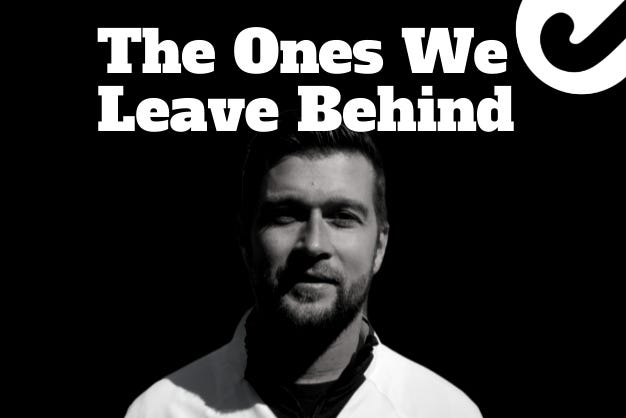The Ones We Leave Behind: A Deeper Look at Selection, Deselection, and the Nature of Talent
Part 1 of a series of articles on developing players by Rein van Eijk, head coach of the Belgian national women's team
The Illusion of Always Being Right
Across all the high-performance and pathway environments I’ve worked in, I’ve made more selection decisions than I can count. Choosing who plays. Who gets a shot. Who moves up to the next level. Who doesn’t. And over the years, something has stood out to me:
I’ve rarely been proven wrong.
Rarely has a player I didn’t select come back to prove I missed something. Rarely has someone re-entered the system and forced their way back in. Now, it’d be tempting to take that as a badge of honour — to take it as a testament to my ability to identify talent, to say I have a good eye for talent or an instinct for potential. But I don’t think that’s the full story. And I definitely don’t think it’s something to be proud of.
Because maybe it’s not that I’ve always been right. Maybe it’s that the system hasn’t allowed players the chance to prove me wrong.
Selection as a Self-Fulfilling Prophecy
In high-performance sport, deselection doesn’t just mean missing out on a tournament or a camp. It often means losing access to the very environments that supports a player’s growth. It means fewer sessions with top players. Less coaching attention, and therefore less exposure to feedback. Less visibility. And all-in all, fewer moments that push you to adapt, improve, or stand out.
In short: it becomes harder to develop.
And especially in high-performance sports where national or global player pools are relatively small, we have to ask ourselves: are we truly comfortable with the idea that the 'could-have-beens' are simply collateral damage of our own impatience? Are we okay with the fact that our early judgments, however well-intentioned, may quietly shut the door on someone whose potential hasn’t yet had a fair chance to emerge?
What starts as a decision based on performance in the moment quickly becomes a decision that affects performance in the future. And that’s where I think we need to pause and reflect. Because selection, when handled the way most systems do, becomes a self-fulfilling prophecy.
We think we’re selecting on quality, but we’re often selecting on readiness. On early bloomers. On players who fit the now. And in doing so, we can easily shut the door on those who might have become the best later. As Gagné (2004) and Baker et al. (2009) argue, what we call 'talent' is often just early performance, and not always a predictor of future excellence.
We, as coaches, pathway managers or mere selectors, tend to confuse being consistently “right” with being good at recognising potential. But I think it’s more complex than that. And if we’re honest, there’s danger in taking too much pride in not being proven wrong.
Because greatness isn’t predictable. Talent doesn’t follow a fixed timeline. And progress, especially for young players, isn’t linear.
My definition of a Talent
Talent? In my view, is nothing more than a head-start. And that head start can manifest in many different ways. It might show up as skill acquisition that comes naturally. It might be raw physical superiority, or a relentless mental focus, or even something as simple (and powerful) as an urge to win — to compete, no matter the task. Talent isn’t a person. It’s not who someone is. It’s an attribute — something someone happens to be particularly good at. Something that gives them a bit of an edge. But how that edge is nurtured, tested, and stretched? That’s what really shapes an athlete.
And here’s the thing — when we deselect players too early, we’re not just making a judgment. We’re taking away the environment they need to close the gap. To catch up. To develop that edge into something meaningful. Something repeatable. Something elite.
In doing so, we don’t just choose a squad. We shrink the entire field of opportunity.
I’ve seen it in so many systems — we say we’re building talent, but we actually clip its wings. We don’t give it the room to evolve, to mess up, to try things and fail. Sometimes, the best coaching we can offer a talented player is to simply not get in the way.
The Role of Struggle in Learning
In some programs, we’re so focused on immediate performance that we overlook that one of the cornerstones of development is giving players the space to struggle. For me, learning is doing things you are not yet capable of doing — and perhaps more importantly, it’s discovering what you didn’t know you were capable of. It’s about placing yourself in unfamiliar situations. That discomfort, that uncertainty, is where the deeper shifts happen.
If a player only repeats what they already know, they’re not learning. They’re stabilizing. they just repeat. They don’t develop new tools. They don’t solve new problems. And they don’t stretch their game. They might be performing. But this way I feel players are not growing.
Especially in complex team sports like hockey, learning emerges when players are pushed to solve problems they’ve never encountered. Getting players into positions they’ve never been in before makes them better — not just technically, but mentally and tactically, too. Let your players experiment. Let them make mistakes. That’s where real growth lives, that’s where magic happens...
What Makes a Practice Valuable
I do see the benefits of smaller, more competitive training groups. They can raise intensity and sharpen focus. But we find ourselves on a slippery slope the moment we start reducing group sizes simply for the sake of selection.
For the record: Me personally, I tend to not measure the quality of a session by its intensity, nor by its competitiveness. I measure it by how many players improved on something they set out to work on. The former happens almost automatically — reduce the numbers and let them compete. But the latter takes intention. It requires creating space for more players to grow, to be seen, and to develop their tools deliberately.
Joy, Time, and Development
There is a time for everything. There’s a time to focus on development, and a time to focus on performance. The environment I work in now — senior international hockey — demands a more result-driven approach. Decisions must be made. Standards must be met. And outcomes matter. That’s part of the reality of high-performance sport.
But that only makes the case for a better pathway even stronger. The wider and deeper we can make the pool of players capable of performing at this level, the more we grow the game. Not just in quality, but in depth, resilience, and long-term sustainability. It grows the game.
Going back to that ‘result-driven high-performance-environment’ I get to work in nowadays. There’s something I strongly believe: if you want to challenge the norm, if you want to raise the bar, if you want to challenge the status quo — if we want to raise our level and be genuinely competitive on the world stage — there’s no option but to bet on growth. We have to be all-in on development. On people who are fully committed to learning and getting better every day. What I believe is simple: if someone enjoys what they do, they’re more likely to spend time doing it. And the more time someone spends on something, the more likely they are to improve – reinforcing that improvement through sheer volume and joy. That’s where confidence and mastery start to grow.
Enjoyment leads to repetition. Repetition leads to growth. This to me, is the foundation for long-term development.
A Word on Selection Criteria
Although I advocate for broader development and longer pathways, this doesn’t mean I believe everyone will make it, or that we should abandon selection. This is high-performance sport. Selection is part of the job — sometimes because tournament formats demand it, other times because the team simply needs clarity.
But how we approach selection matters. Too often, we rely on narrow criteria. We make decisions based on isolated performances. And especially when this happens at too young an age, it’s far too early to determine anyone’s ceiling. Research supports this — studies by Côté & Fraser-Thomas (2007) and Vaeyens et al. (2008) emphasize that early selection in such sports is often unreliable due to the multitude of variables involved in long-term development.
If we’re serious about long-term athlete development, we have to stop making definitive judgments based on singular moments. Talent evolves. Kids grow. One tournament or one test doesn’t tell the whole story — and it shouldn’t decide someone’s ceiling. But in doing so, we miss the nuance. We miss the intangibles — like resilience, adaptability, drive, and growth potential. These traits aren’t easily captured by short-term metrics, yet they’re often the true indicators of long-term success. And too often, we don’t give those qualities the time or space to fully emerge.
So what can we do differently?
Changing the System
We can start by designing systems that leave the door open. By letting deselected players remain in peer environments. By creating feedback loops that live beyond selection moments. By giving players the chance to stay visible, stay challenged, and stay connected.
That’s also why I’ve always pushed back on systems that force us to select players at a young age — as was the case several years ago in the Netherlands. It often creates the illusion of certainty far too early, and narrows the pathway prematurely.
During my time at Amsterdamsche Hockey & Bandy Club (AH&BC), we revolutionised the way we approached our U14 and U12 teams, based on this very conviction. We moved away from early ranking and fixed selections, and focused instead on broader development, flexible movement between groups, and keeping doors open as long as possible. The idea was simple: let talent breathe.
It’s also why I felt aligned with the Deutscher Hockey-Bund e.V. (DHB). Their decentralized model keeps players in regional systems longer, allowing more time for development — and fewer premature judgments.
Every person might have a talent. But not everyone gets the opportunity to turn that talent into something more. Into something lasting. Into something great. Let me be clear – I do not believe anyone can make it, or that we should stop selecting altogether.
But I’ve also come to realise that greatness is rare. Sometimes it’s buried deep, very deep. It might even need (a lot of) time. And on top of that, greatness is not always easy to spot. There are so many intangibles that influence whether someone turns something good into something great. So if you ever even see a glimpse of it, don’t just evaluate it.
Protect it. Nurture it. Give it room to grow.
Because the ones we leave behind? Sometimes, they were the ones who just needed a little more time.
About Rein van Eijk
Red Panthers Head Coach | Culture, coffee & counterpress | Helping good players become great teammates | One pass at a time
Interested in development pathways?
Make sure to join us when we go live with a new masterclass by GB coaches Jon Bleby and Mark Bateman ↓






Fantastic piece that applies across the board. See it in soccer often with late bloomers (lacking strength and speed) being tracked as second or third tier players and being under the tutelage of second or third tier coaches. As you so eloquently note, it's so hard to change your trajectory...the exception being basketball. If a girl goes from 5'7 to 6'1 over a summer she'll have her pick of teams. Thx for offering this perspective.